Years ago, Phantosys innovated in the application of client-server connection via network boot (PXE) by allowing the immediate and simultaneous mounting of virtual disks directly on large numbers of PCs (without any hypervisor or local operating system) and instant boot of independent systems via streaming (a concept used in video streaming services, for example).
This allows hundreds of computers to be installed and started remotely and unattended in a matter of minutes, and transparently to the user.
The Phantosys solution allows the distribution of disks containing ready-to-use systems. While each user’s system is booted and available for immediate use, the Phantosys virtual disk driver continues the process of transferring and storing the virtual disk file to each PC as a background task, without compromising its use.
Likewise, new versions of virtual disk containing system updates, new software or any changes in settings, can be synchronized with client PCs also during normal use, becoming available to the user at the next boot.
However, Phantosys V10 has incorporated a new method, very useful for installing clients on remote networks
The method of connecting clients via PXE, although faster and more convenient in networks with a large number of clients, in some situations is not desirable or feasible.
For such situations, such as in small branch networks, remote offices or home office users, Phantosys V10 incorporates a new client PC connection method.
Through the use of an EFI installer on a USB disk drive, the client PC can be connected directly to the IP of a Phantosys server hosted anywhere, either on the company’s internal network or on a Cloud Server.
Another new feature of V10 allows for locally load a virtual disk also via USB drive. Instead of applying the streaming method, normally used on the local network, this alternative allows aggregating and managing remote clients without necessarily having to transfer entire disks through the WAN network.
By this method, the client PC can be booted with a standard version of the virtual disk loaded locally via USB, and later receive only disk updates while connected to the Internet, during normal use.
Simple steps for connecting and installing a client via USB
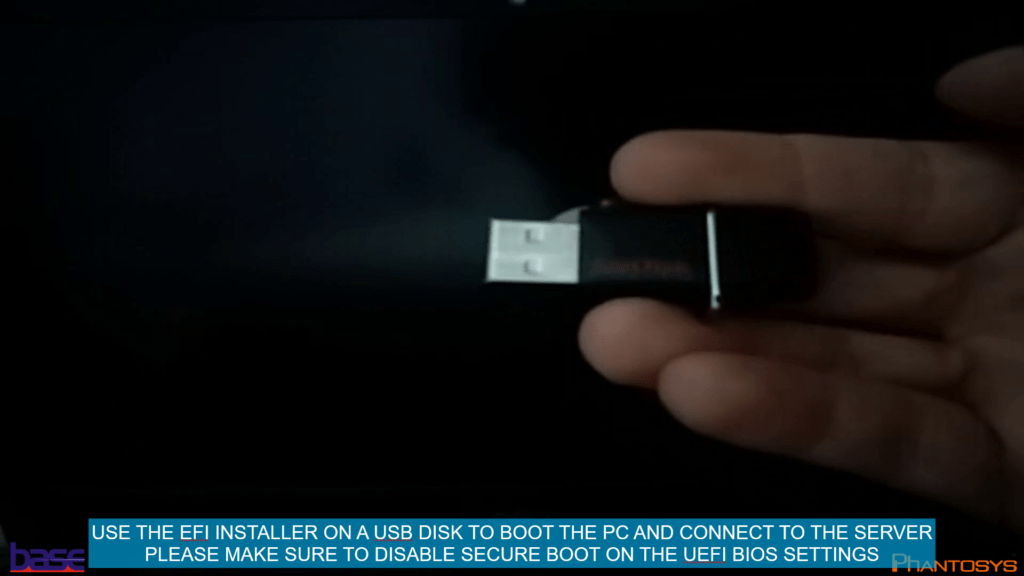
Save the EFI boot loader on a bootable USB drive 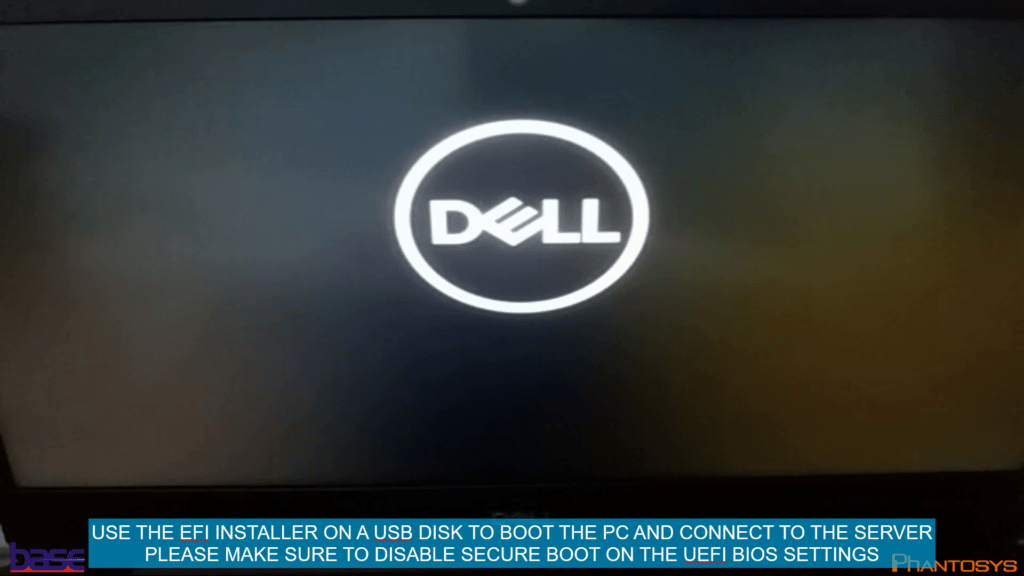
Start the computer 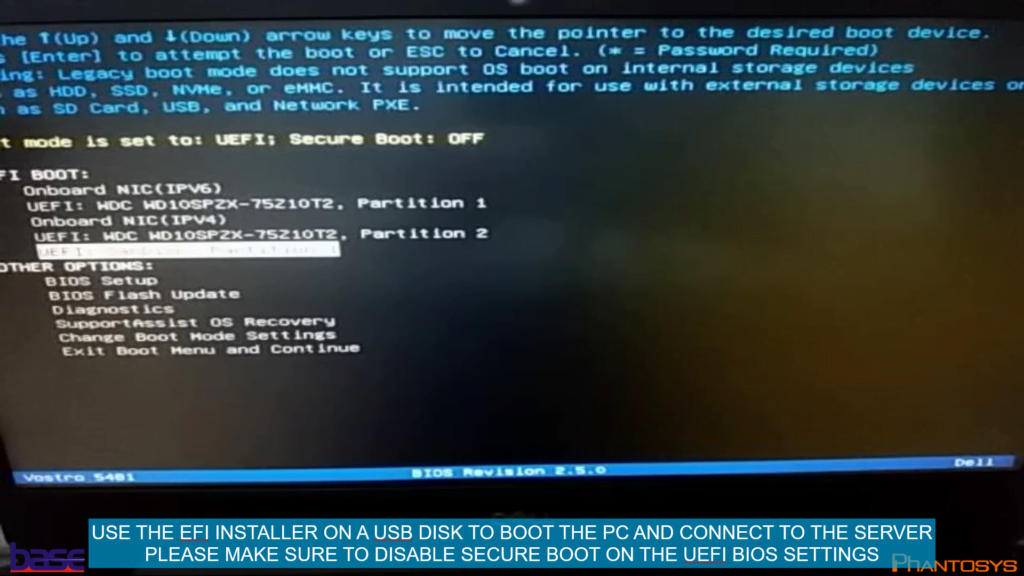
Select boot from USB 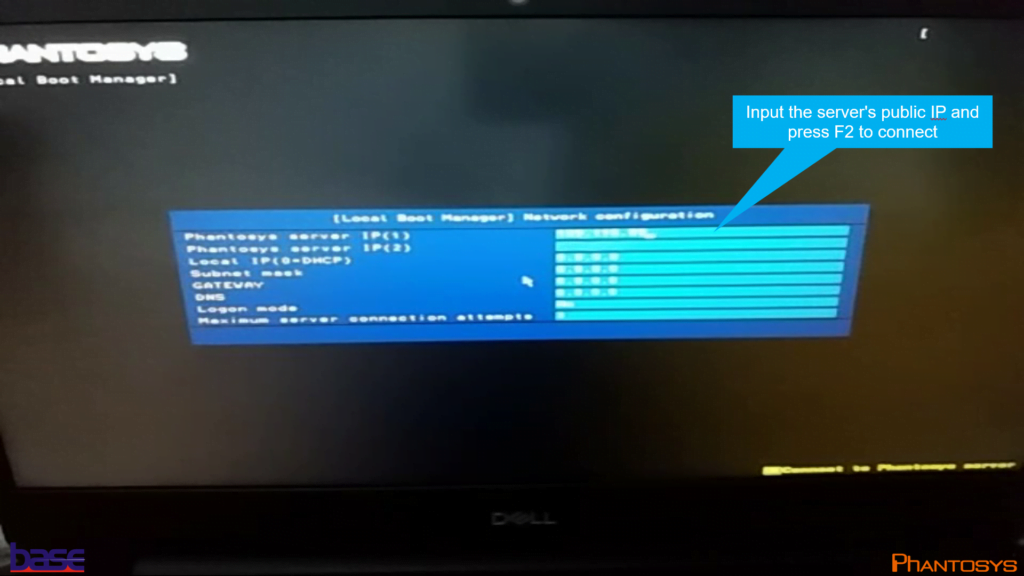
EFI boot loader requires the Server’s IP 
After connection choose a name for the computer 
Install Phantosys Cache and Local Boot Manager in the PC’s HD 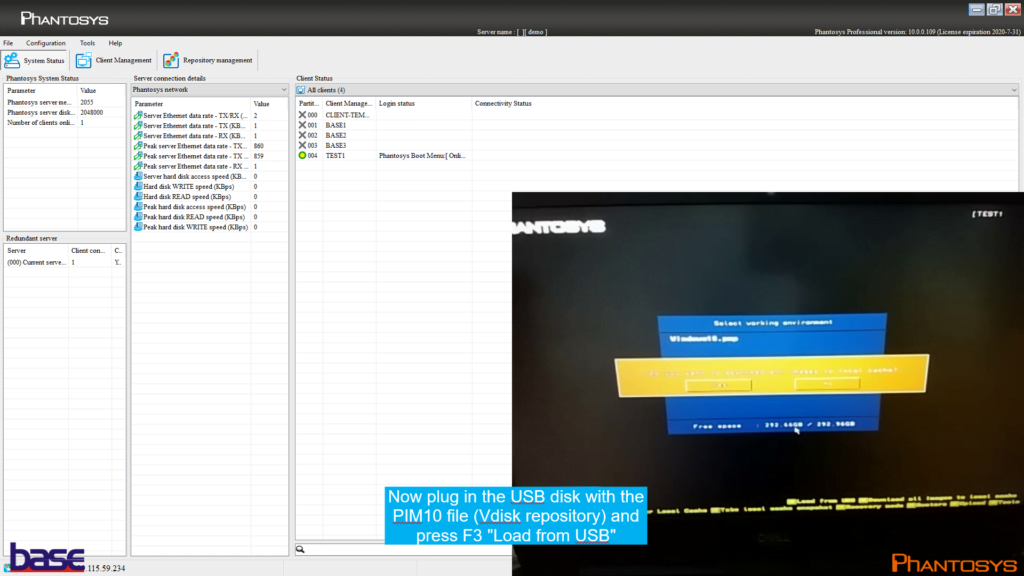
Load the Vdisk from the repository file stored on a local USB drive 
Wait until the copy is completed 
Select the Vdisk boot entry 
PC mounts the Vdisk and starts to boot the system 
Windows is loaded in a few seconds and it’s ready for use 
Requirements for installation by USB